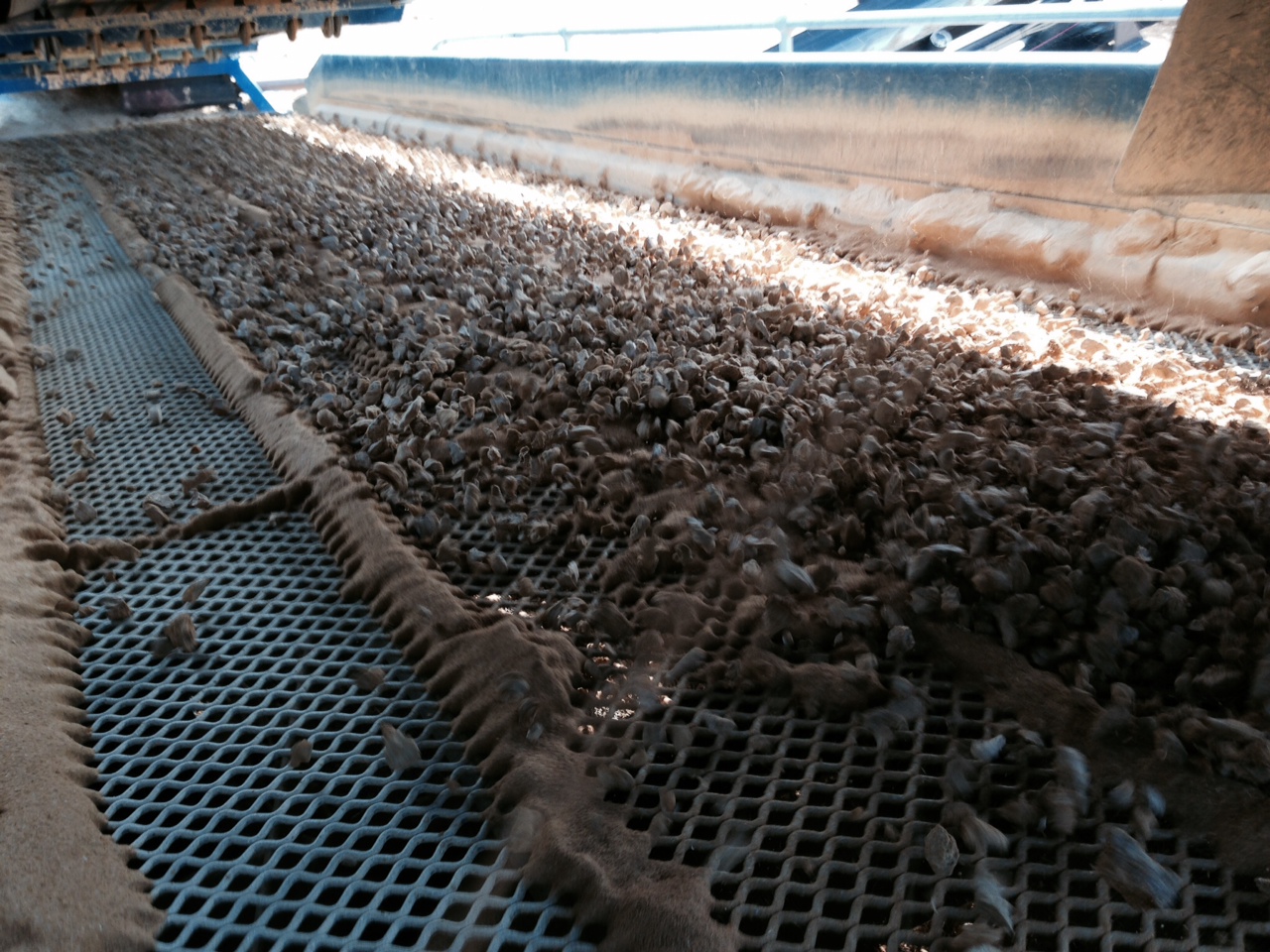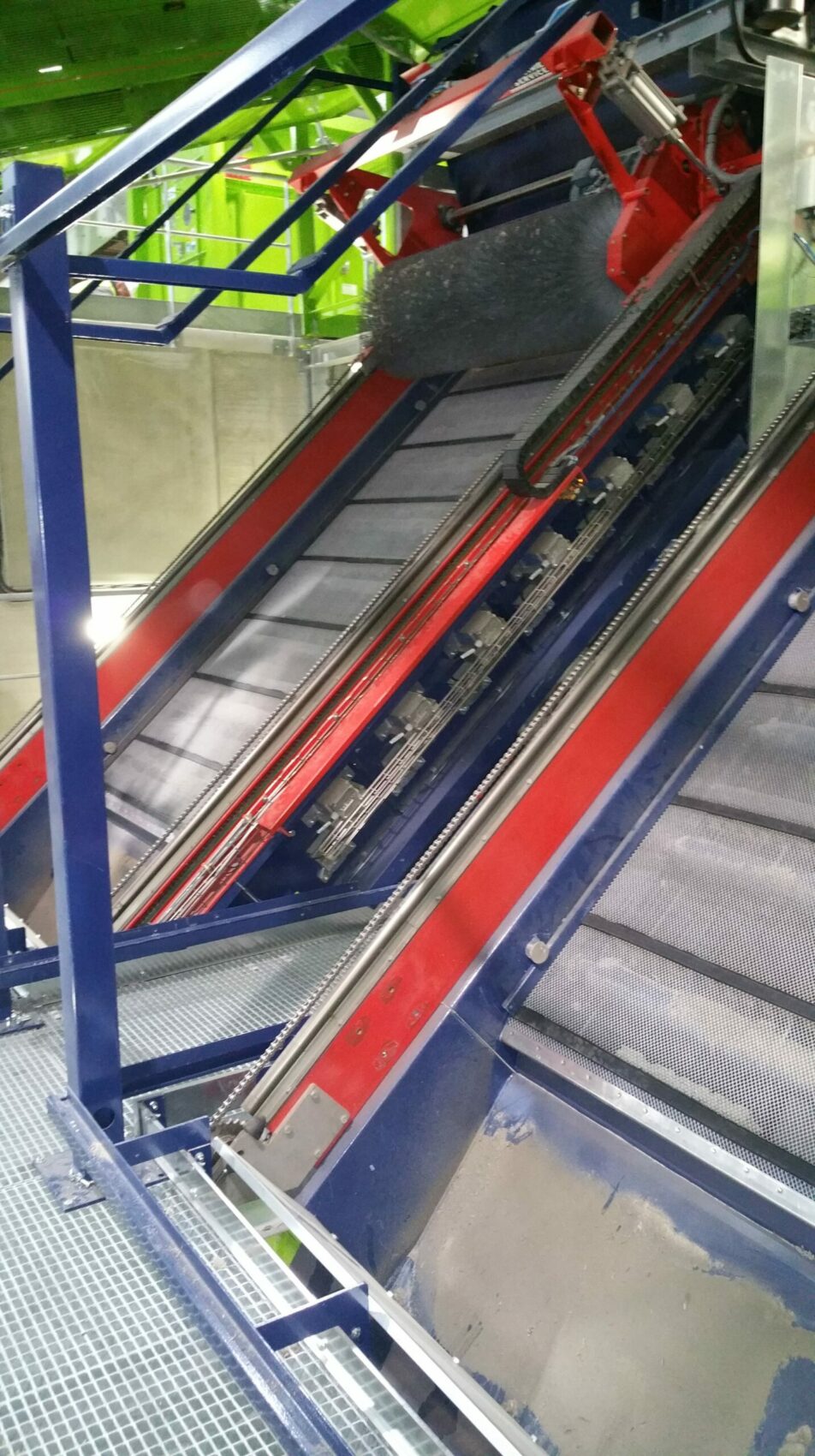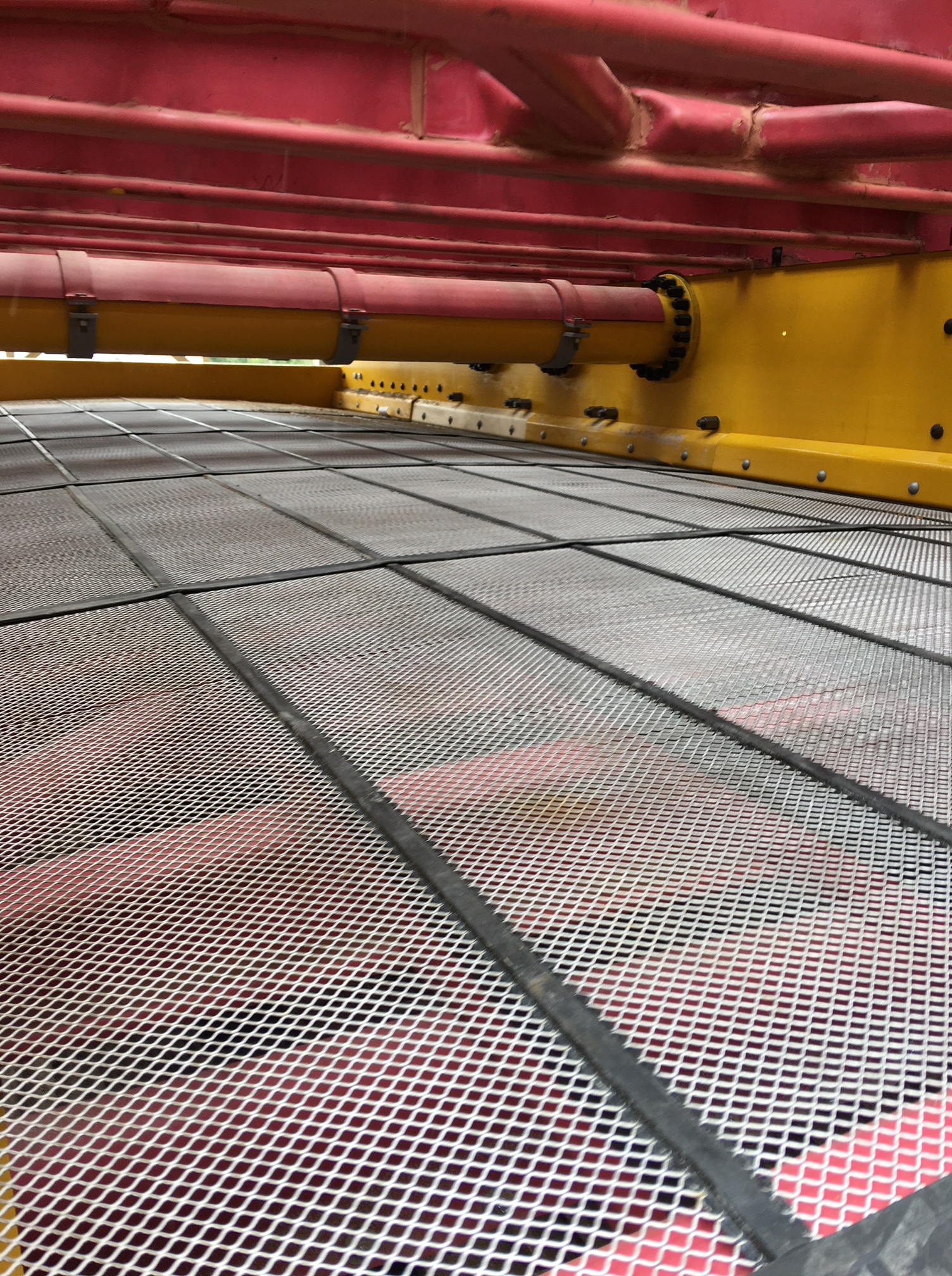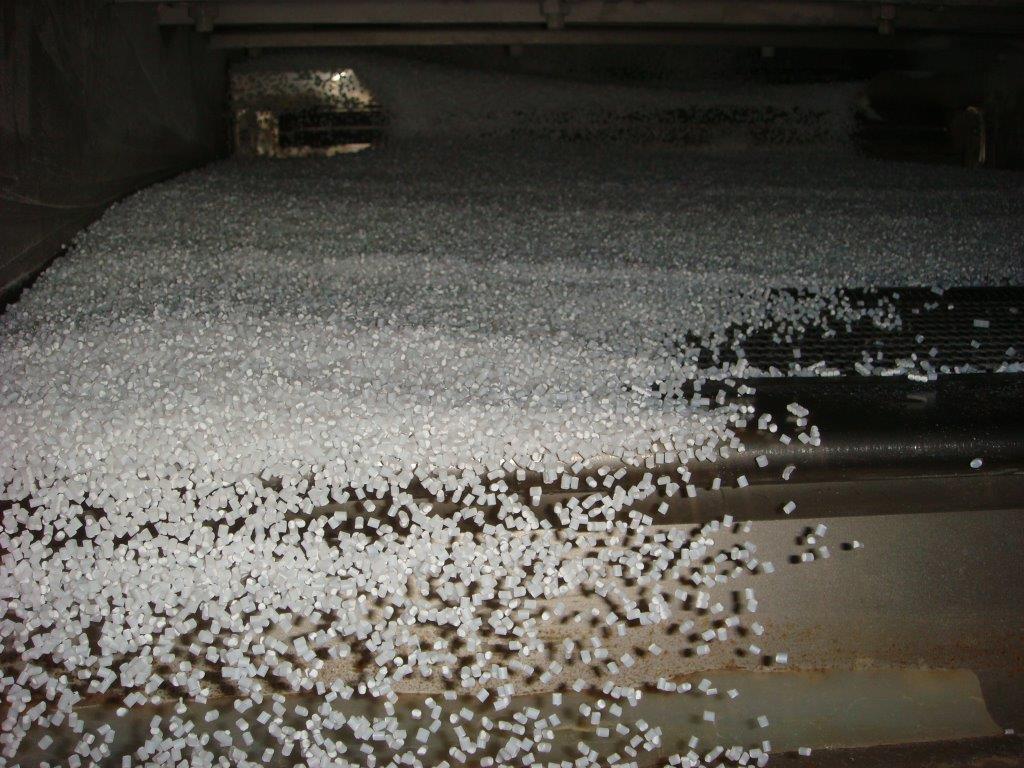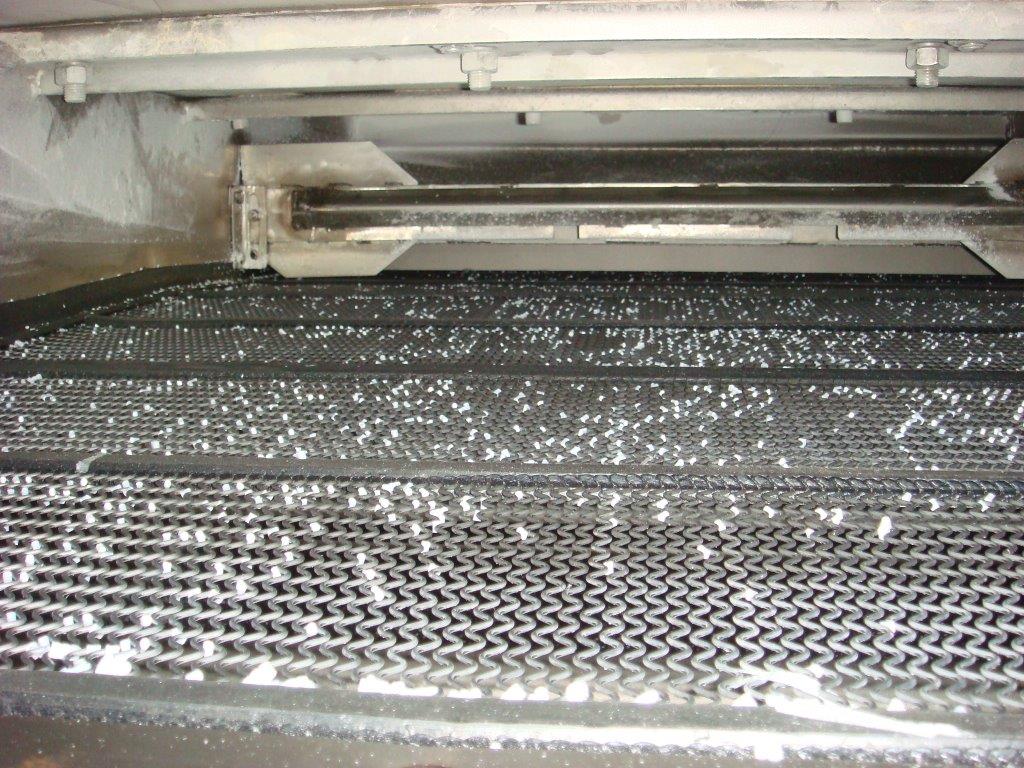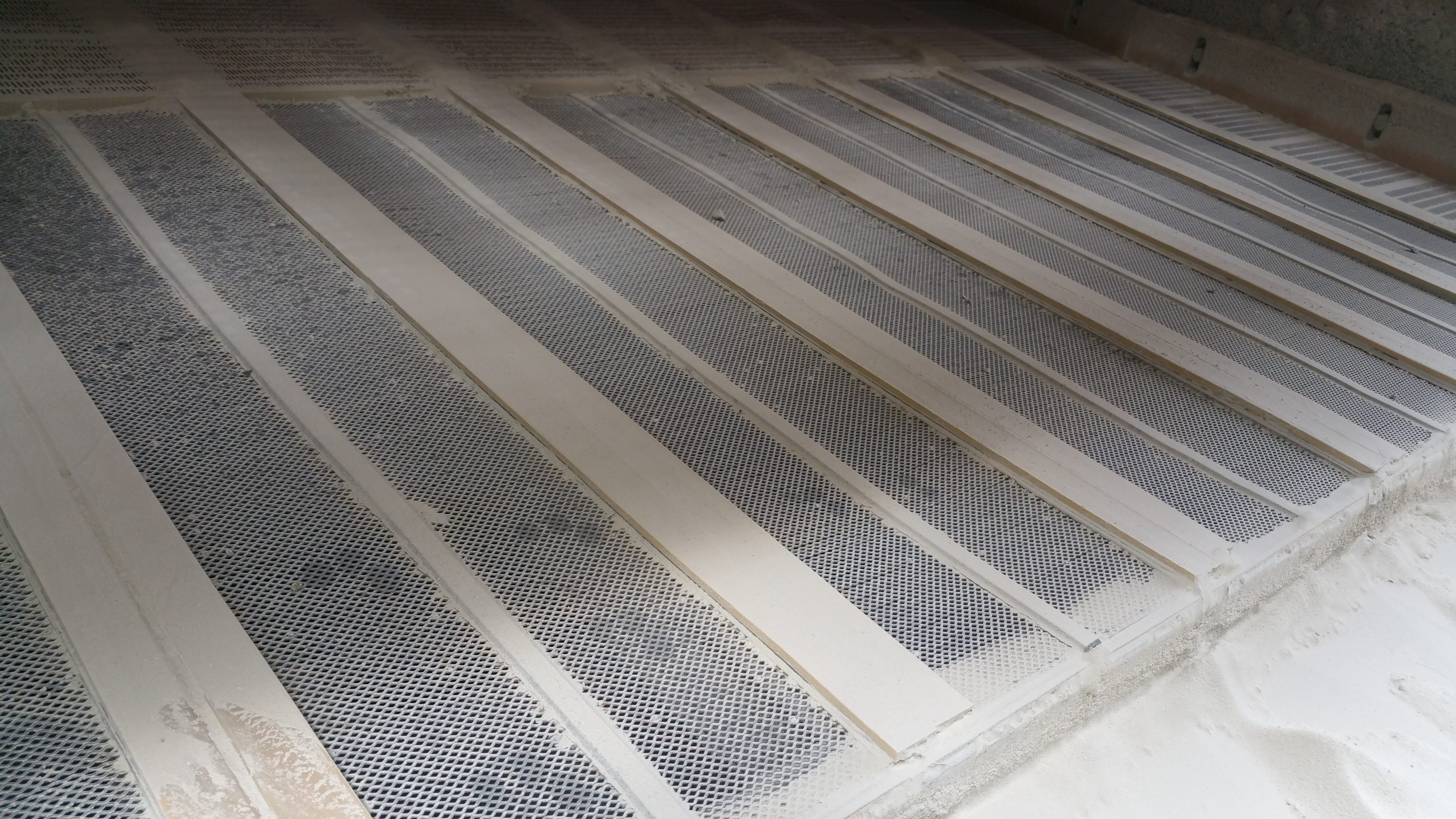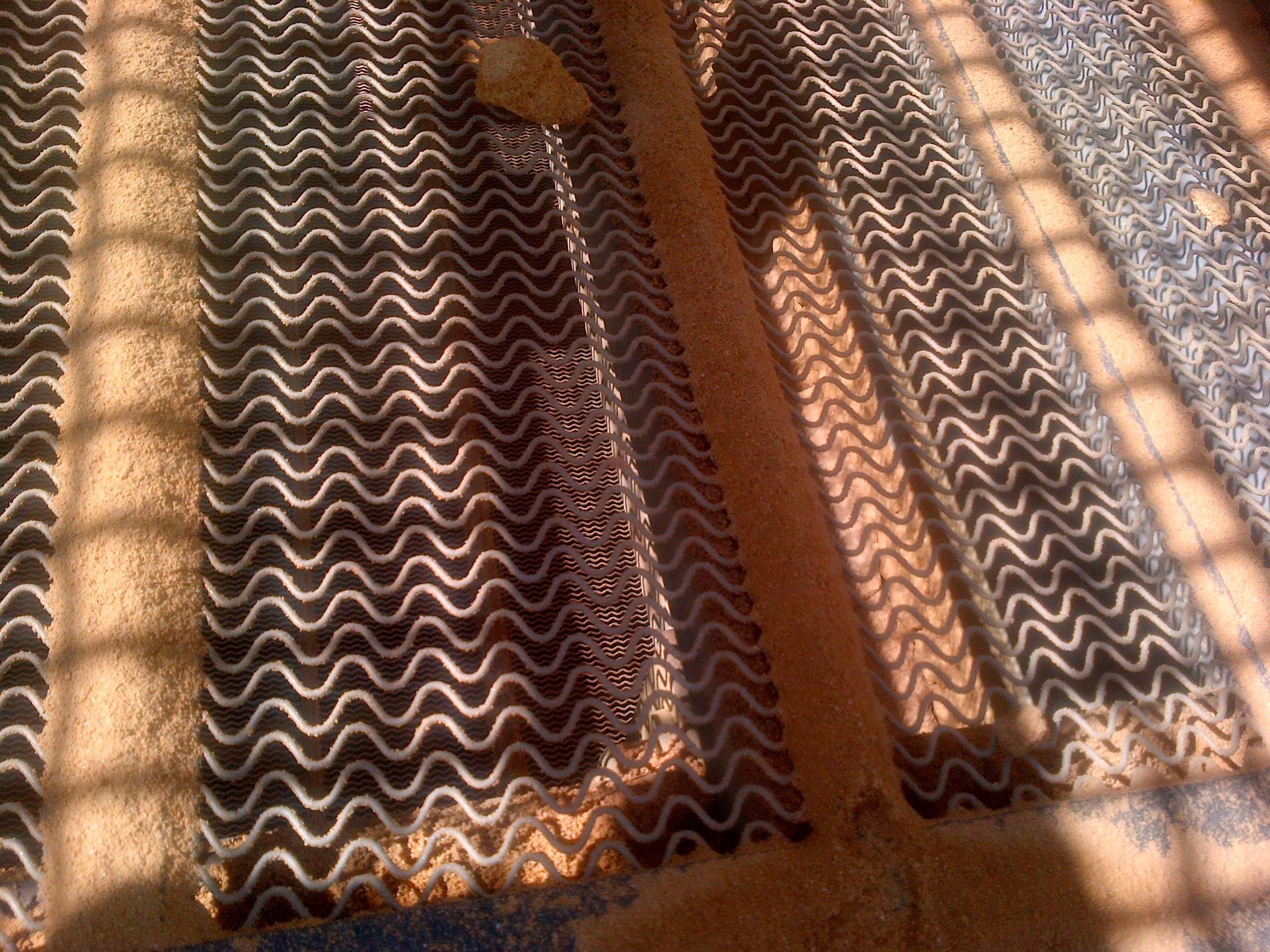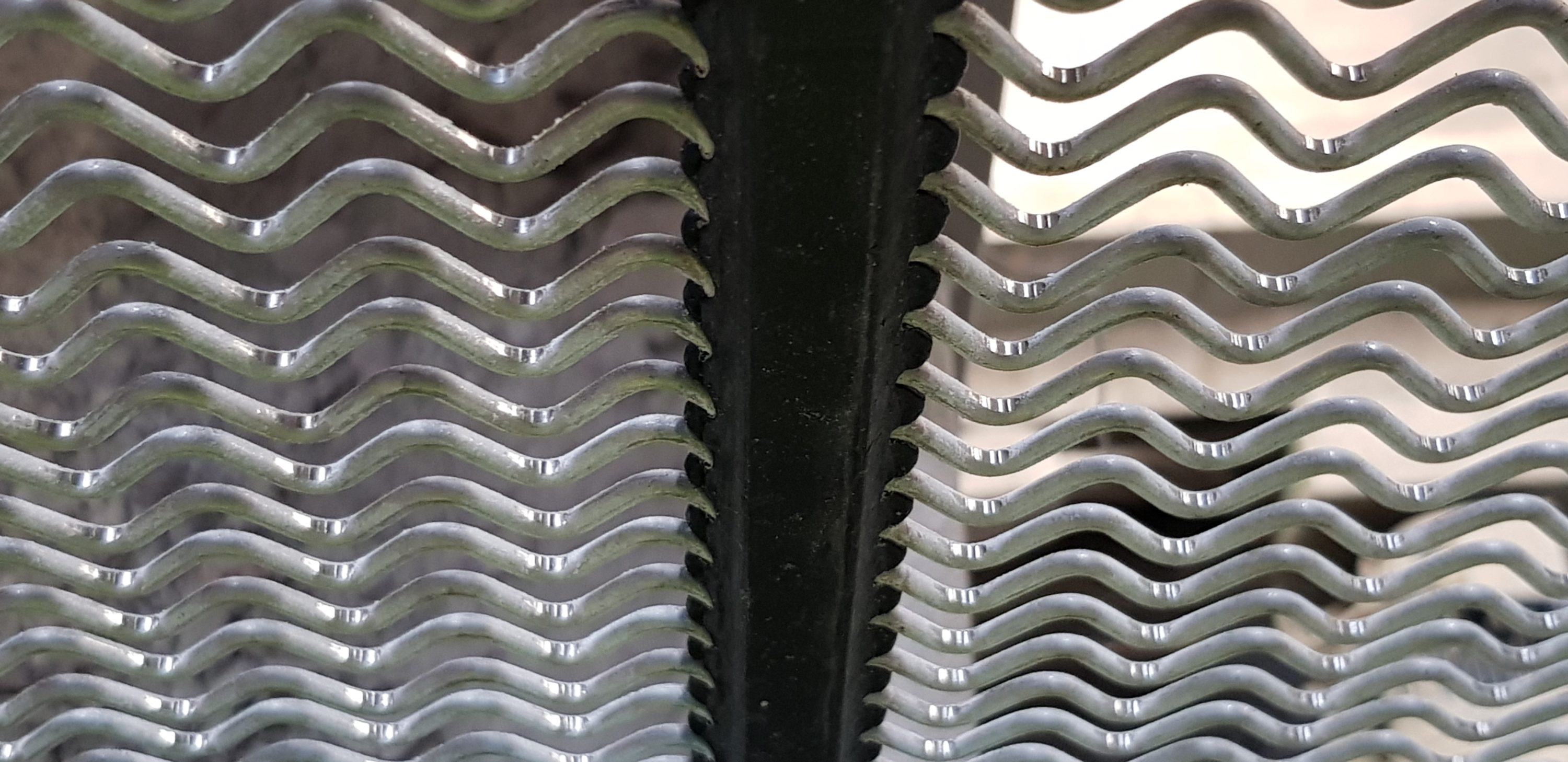Anti-clogging cloths
Presentation
Invented and patented by the GIRON company in the 1950s, anti-clogging cloths are now widely available worldwide. They are the flagship product of our company which knows them inside-out.
These vibrating wire cloths are composed of preformed high resistant steel warps that are independent of each other and are juxtaposed in the horizontal plane. These wires are held together by means of vulcanised rubber or polyurethane wefts, ensuring respect of the cut until the wire is completely worn.
The assembly provides a perfectly flat, integral screening surface with large flexibility and thickness limited to a single steel wire. It is therefore not surprising that this type of weave is commonly used to improve abrasion resistance, especially as its anti-clogging and anti-pegging performance, and therefore its screening efficiency, allows for bigger wire diameters than those used in the production of so-called classic cloths.
These cloths are manufactured with square, triangular, rectangular or sinusoidal, high resistance steel but also stainless steel meshes.
Testimonial:
« In a screening plant, the right choice of cloth is crucial because it determines the grading curve of the product and the efficiency of the screen. The manufacturer of the cloth has to deal with two constraints:
– the screen itself with its mechanical characteristics (chassis, vibration);
– the product that is almost a living entity as it is natural (shape, hardness, moisture, etc.).
Experience has shown that the use of an anti-clogging cloth could significantly improve the performance of the screen, or better, make screening possible where no solution had been found.
But it was necessary to study this form in terms of the problem to be solved… This has led us to imagine several kinds of anti-clogging cloths – one of which will produce the best results. »
ONDAP
The ONDAP square mesh cloth is designed to be used on vibrating screens with a longitudinal or lateral tension system.
Use
These cloths meet several objectives:
1. Maintaining a practically intact screening surface despite the presence of clay or humid fines that tend to clog ordinary woven wire cloths.
2. Reducing or even eliminating pegging on crushed products.
3. Improving the flow of a screen that is too small due to the wires’ high permeability.
4. Allowing, in the case of substantial abrasion by fine products under watering conditions, for an unmatched period of use, in an enhanced series.
Characteristics
Warp : the warp wires are independent of each other and form square meshes with diagonals directed towards the conveying direction of the products.
As warps are independent of each other, the impacts produced by the elements to be screened cause differences in vibration preventing fine particles from clogging between wires.
Then, 50% thinner than conventional screen cloths, the wires are non-intersecting, which explains their high permeability and high wear resistance owing to reduced friction.
Weft : the use of abrasion-resistant rubber or polyurethane to replace steel wire wefts or pre-cut sheets was a considerable improvement at the time.
Wefts, which are necessarily raised with respect to the screening surface itself, are therefore subjected to harsher screening forces and are very hard-wearing due to the undeniable abrasion resistance of rubber or polyurethane.
Wefts form an integral unit, so there is no possibility of lapping by screening fines, which ensures significantly longer use.
This design also provides a more flexible cloth which is thus more effective under vibration, as the wires are no longer constrained by steel wefts.
Specific points
Depending on its use, special features of your products or your operating conditions, the screening result obtained with a ONDAP cloth may vary.
GIRON can give you all the advice you need to find the optimal solution in terms of the choice of:
– wire diameter (light to reinforced series)
– spacing between weft strips
– steel, rubber or polyurethane weft strips
Meshes: 0.8 mm to 100 mm.
MIXTE
The MIXTE triangular mesh cloth characterised by the alternation of ONDAP wires and straight wires is designed to be used on vibrating screens having a longitudinal or lateral tension system.
Use
These cloths are suitable for several situations:
1. In the case of a fine cut on a product with a large particle size.
2. When impacts or high loads may be expected.
Characteristics
Warps
Warp wires, alternating a crimped wire and a straight wire, are independent of each other and form triangular meshes.
As warps are independent of each other, the impacts produced by the elements to be screened cause differences in vibration preventing fine particles from clogging between wires.
In addition to this phenomenon identical to ONDAP cloth, the possibility of alternating crimped and straight wires with different diameters also varies the vibration amplitude, which is accentuated by the fact that one of the wires is tensioned and the other loose.
Then, 50% thinner than conventional screen cloths, the wires are non-intersecting, which explains their high permeability and high wear resistance owing to reduced friction.
Wefts
The use of abrasion-resistant rubber or polyurethane to replace steel wire wefts or pre-cut sheets was a considerable improvement at the time.
Wefts, which are necessarily raised with respect to the screening surface itself, are therefore subjected to harsher screening forces and are very hard-wearing due to the undeniable abrasion resistance of rubber or polyurethane.
Wefts form an integral unit, so there is no possibility of lapping by screening fines, which ensures significantly longer use.
This design also provides a more flexible cloth which is thus more effective under vibration, as the wires are no longer constrained by steel wefts.
Specific points
Depending on its use, special features of your products or your operating conditions, the screening result obtained with a MIXTE cloth may vary.
GIRON can give you all the advice you need to find the optimal solution in terms of the choice of:
– the diameter(s) of wire to be chosen (Ondap wire and straight wire)
– spacing between weft strips
– steel, rubber or polyurethane weft strips
Standard range
Wires diameter : 1 mm to 8 mm.
ZIG-ZAG
LZIG-ZAG cloth is used to obtain the best anti-clogging results due to the lack of any contact between screening wires.
The amplitude, curve and wave length parameters characterising the shape of the warp wire mean that there is a broad potential for adaptation.
It is thus possible to limit the passage of flat or long elements by acting on one or several of these parameters to determine a practically closed mesh.
Use
These cloths are primarily solutions to cases of severe clogging.
Characteristics
Warps
Warp wires are independent of each other and form open meshes.
As warps are independent of each other, the impacts produced by the elements to be screened cause differences in vibration preventing fine particles from clogging between wires.
In addition to this identical phenomenon to ONDAP cloth, the ability to adapt the crimp height brings a wide range of solutions.
Then, 50% thinner than conventional screen cloths, the wires are non-intersecting, which explains their high permeability and high wear resistance owing to reduced friction.
Wefts
The use of abrasion-resistant rubber or polyurethane to replace steel wire wefts or pre-cut sheets was a considerable improvement at the time.
The wefts, which are necessarily raised with respect to the screening surface itself, are therefore subjected to harsher screening forces and are very hard-wearing due to the undeniable abrasion resistance of rubber or polyurethane.
Wefts form an integral unit, so there is no possibility of lapping by screening fines, which ensures significantly longer use.
This design also provides a more flexible cloth which is thus more effective under vibration, as the wires are no longer constrained by steel wefts.
Specific points
It should be noted that each ZIG-ZAG cloth, more than any other ONDAP or MIXTE anti-clogging cloth, demands a more precise approach to conditions in order to define the characteristics that best solve the problem raised by screened materials.
GIRON brings you all the advice needed to find the optimal solution in terms of the choice of:
– the wire diameter to be chosen
– the crimp form
– spacing between weft strips
– steel, rubber or polyurethane weft strips
Standard range
Fils : 0.6 mm à 7 mm.
LONPLAN
These long, rectangular mesh cloths with parallel wires are absolutely flat.
They are primarily used in the dewatering of sand and in water loss wear cloths in the case of screening under extensive washing, when the screen, usually at lateral tension, comprises several successive cloths.
In this case, the first cloth may fill the gap of half of the square cutting mesh.
Characteristics
Warps
The warps are uniformly straight. No crimping or stamping operations harden the wire or modify the structure of the steel. This feature allows the use of very high resistance steel wires or stainless steel spring wires.
This advantage gives the LONPLAN cloth unmatched mechanical and abrasion resistance.
Wefts
Wefts consist of metal reinforcements embedded in an abrasion-resistant rubber and form, with the warps, by pressurised vulcanisation, an integral assembly making any movement or lapping between wires impossible.
Rubber strips may be replaced by polyurethane strips capable of satisfying certain food standards, for example.
Specific points
Depending on its use, special features of your products or your operating conditions, the screening result obtained with a LONPLAN cloth may vary.
GIRON can give you all the advice you need to find the optimal solution in terms of the choice of:
– the wire diameter to be chosen
– spacing between weft strips
– steel, rubber or polyurethane weft strips.
Standard range
Fils : 1.6 mm à 8 mm.
PIANO WIRE
These long, rectangular mesh cloths with parallel wires are absolutely flat.
Piano wire is usually mounted on mobile screens in longitudinal tension. It has very strong anti-clogging and permeable properties. However, its cut may lack precision for some applications. Its moveable combs allow it to easily adapt to screen supports.
Standard range
Wires diameter : 0.8 mm to 3 mm.
